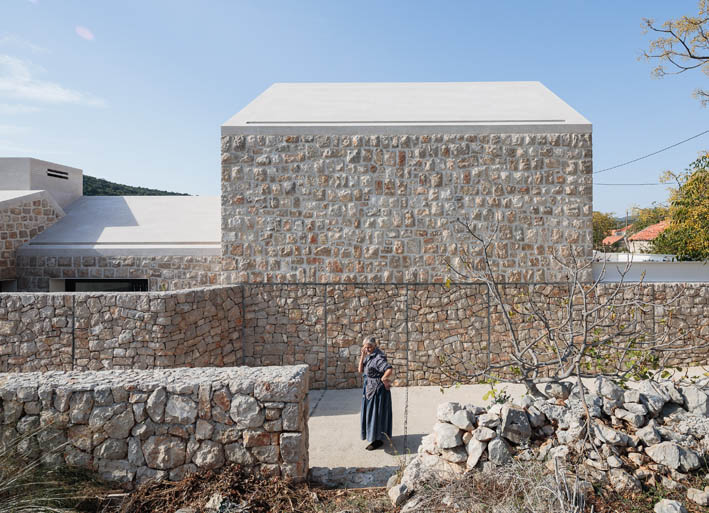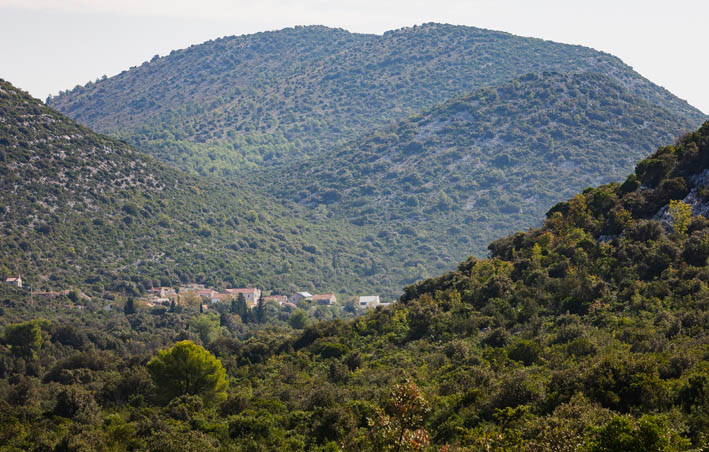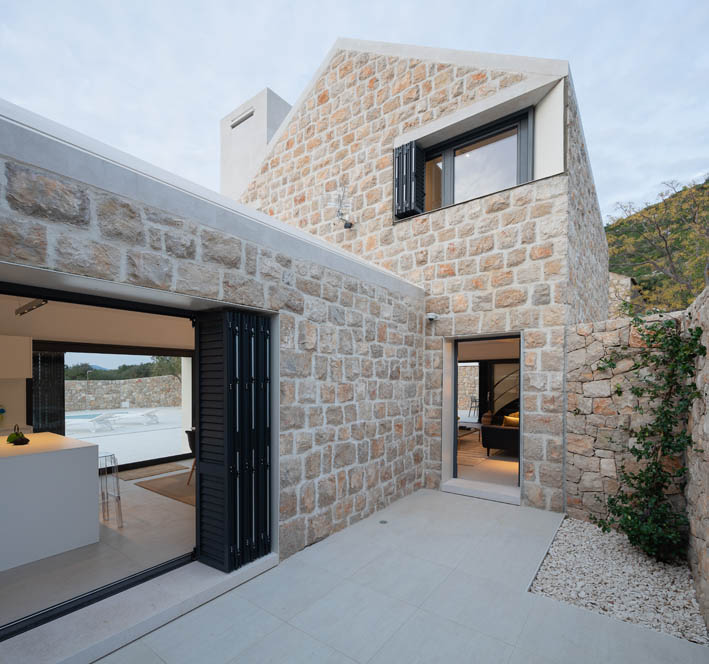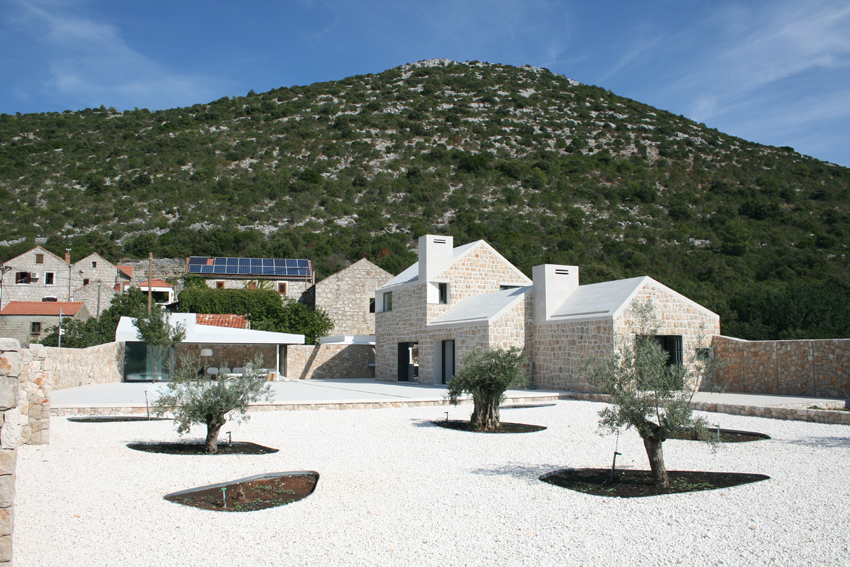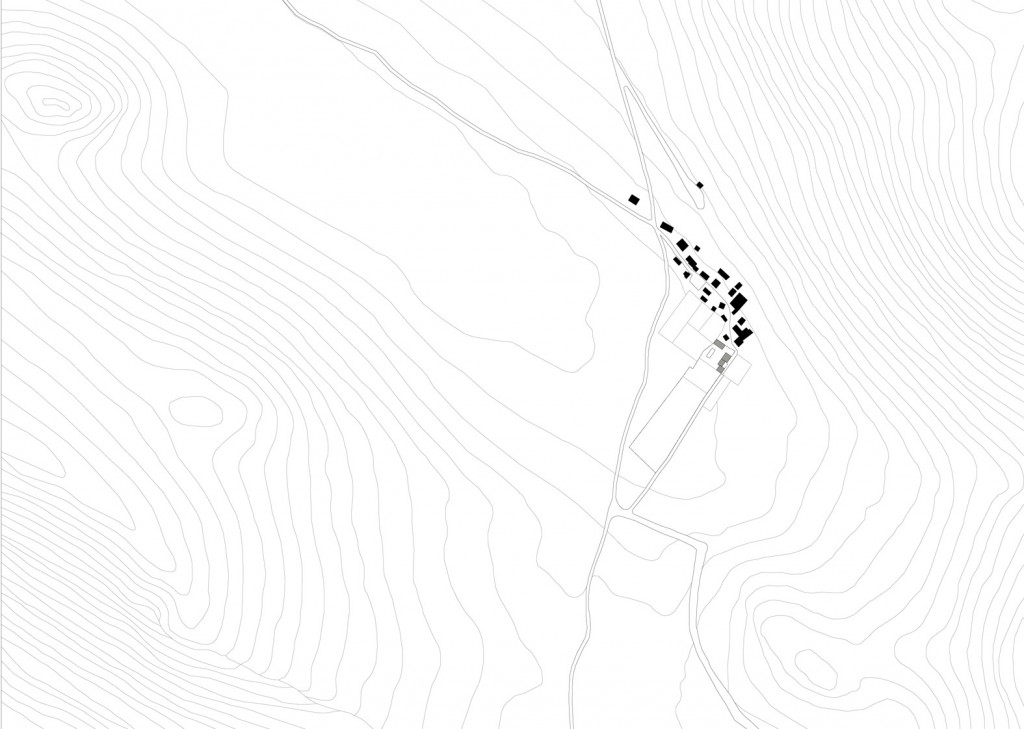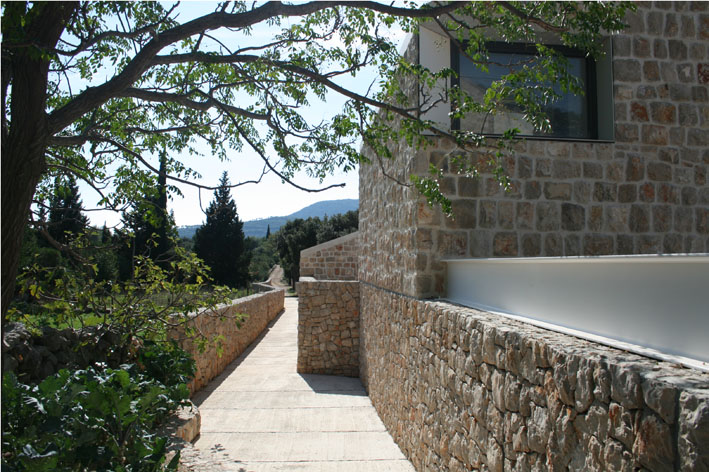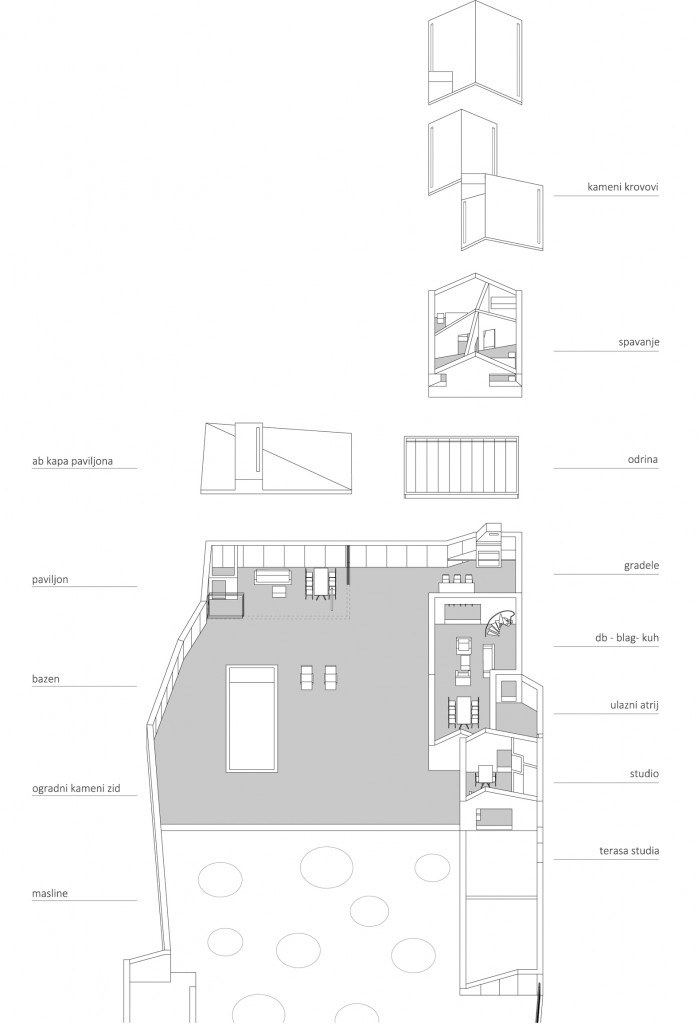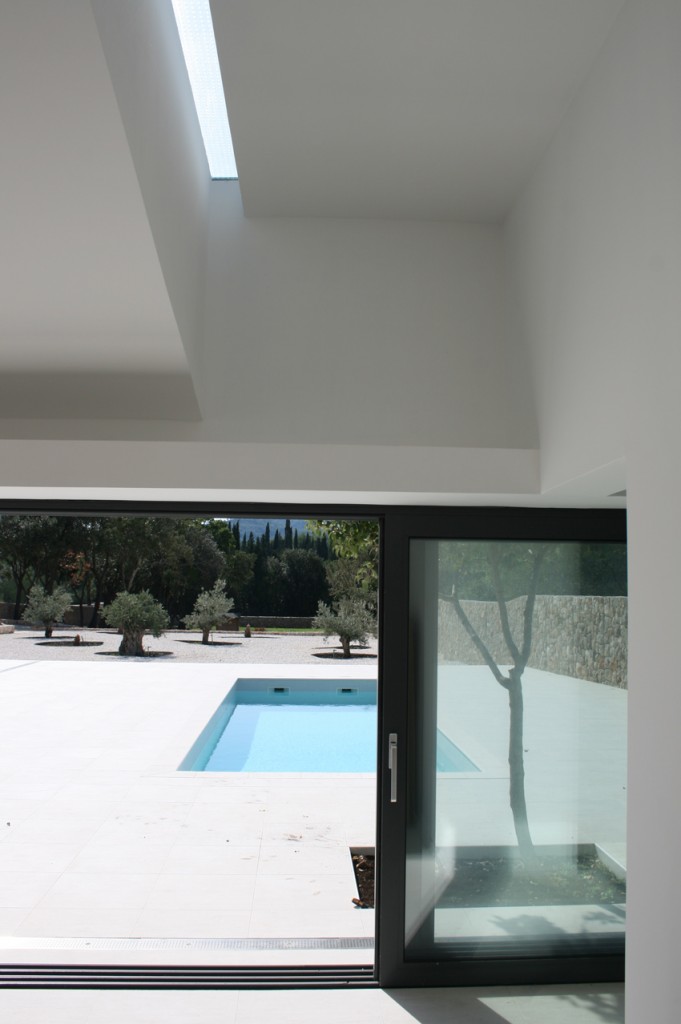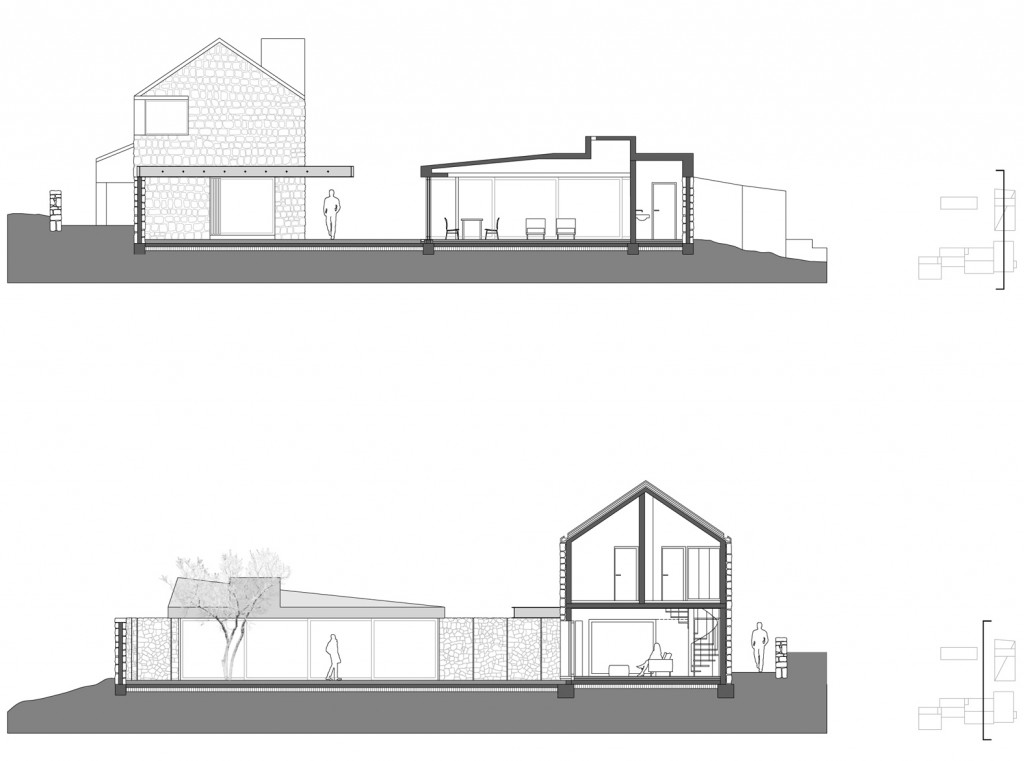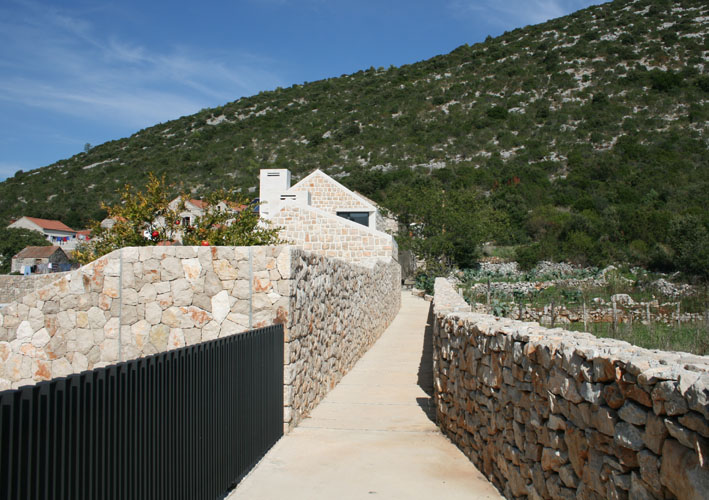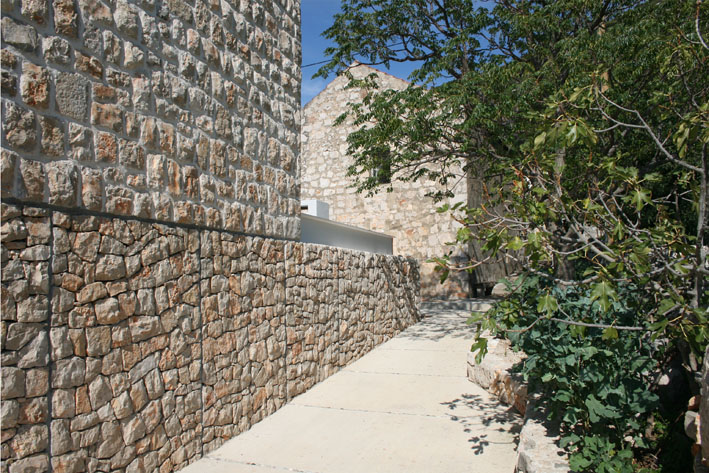rural complex , peljesac peninsula
project: 2014
completed: 2017
bruto area: 153 m2
site area: 3800 m2
PIRANESI award 2019 shortlisted
EU Mies van der Rohe 2019 award Nominee
“drago galić” award 2017 Nominee (best achievement in the field of residential architecture) by the Association of Croatian Architects
Country house is located in a very small and secluded village on the Pelješac peninsula. The ruinous and abandoned agrarian and housing ensemble is transformed into a place of leisure and relaxation. The hierarchy of the previous object’s programmatic disposition is eliminated through an extensive reconstruction, while the characteristic composition of the three existing volumes is preserved.
New structures are added, and with the surrounding wall they form a small agglomerate. Emerged assembly evokes the morphological pattern of the Dalmatian rural places in the sense of scale, proportion and juxtapositioning, especially so in terms of newly formed interspace with different characteristics and atmospheres.
The stonewall fence is the primary spatial and constituent element of the complex. It assumes a twofold role: it defines the cultivated space and separates it from the landscape, while simultaneously linking the building elements and the various spatial sequences into a self-contained whole. The rhythmic sequence of the multi-voluminous object is complemented by structures of Mediterranean origin (pergola, outdoor fireplace, garden pavilion, entrance court), thus generating a spatial frame from converging programmatic and ambiance elements.
Spatial interconnection with the immediate surroundings and visual communication with cultivated and natural landscape are articulated by framed sequences and panoramic views that are dependent on the scenario of use and the physiognomy of place. In contrast to the framed Malapartean images in the interior, the stay in the shadows of the pavilion provides extended panoramic views of the dynamic Pelješac landscape.
Common to all the outdoor spaces is an ambivalence expressed by the sense of introversion and protection with simultaneous openness provided by deep and wide views.
The self-sustainability achieved by designing and constructing this country complex is not derived from a repository of trendy approaches in sustainable construction. Synchronization with the environment was achieved through the passive use of natural resources, as well as through combined use of sturdy authentic and industrial materials, and, moreover, by the use of local crafts. In the context of the locally weakened construction industry and fading craftsmanship, great attention is paid to the adaptation of design solutions that respond and reinvent local architectural expressions and know-how.
